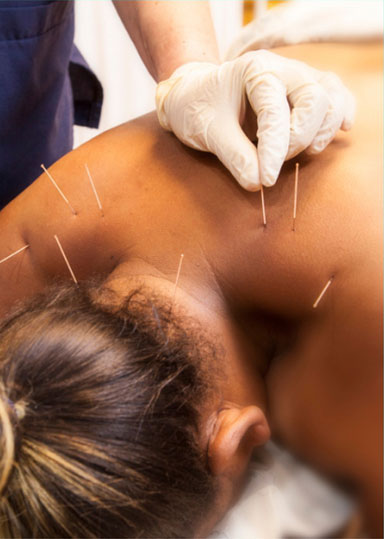
Dry needling is a therapeutic technique that involves inserting thin needles into the skin and underlying tissues to stimulate trigger points, muscles, and connective tissues. Unlike traditional acupuncture, which is rooted in traditional Chinese medicine and aims to balance the flow of energy (qi) in the body, dry needling is based on Western anatomical and neurophysiological principles.
Trigger Point Stimulation:
- Targets specific trigger points, which are hyperirritable spots in muscles associated with pain and tension.
- Insertion of thin needles into these points to stimulate local twitch responses and alleviate muscle tightness.
Muscle and Connective Tissue Modulation:
- Addresses muscle knots, tight bands, and connective tissues to promote relaxation and improved flexibility.
- Aims to enhance blood flow and oxygen supply to the treated area, supporting tissue healing.
Western Anatomical and Neurophysiological Basis:
- Rooted in Western medicine, with a focus on anatomical structures and neurophysiological responses.
- Differs from traditional acupuncture, which follows the principles of balancing energy flow in Chinese medicine.
Pain Relief and Neuromuscular Dysfunction:
- Often used as part of a comprehensive pain management strategy for musculoskeletal conditions.
- Targets neuromuscular dysfunction by addressing tight or dysfunctional muscles contributing to pain.
Evidence-Based Approach:
- Supported by scientific research and evidence demonstrating its effectiveness for certain musculoskeletal issues.
- Applied based on specific anatomical and neurological principles, contributing to its credibility in Western healthcare settings.
